Pink Flamingo Clematis – 1 Gallon Pot
$49.97 Original price was: $49.97.$34.98Current price is: $34.98.
SKU: D2LSC 5215045225 Categories: Clematis Vines, VINES & CLIMBERS
- Experience the difference quality makes.
- Buy with Peace of Mind
- Free Shipping, No Compromise on Quality
- High quality products, hassle-free returns.

Pink Flamingo Clematis
Clematis‘Pink Flamingo’
Plant Details
USDA Plant Hardiness Zones: 3b-9b Find Your Zone
Plant Type: Flowering Vine
Height or Length at Maturity: 10-15′
Width at Maturity: 6-8′
Spacing: 4+’ apart to cover fences and walls
Spacing: 4+’ apart to cover fences and walls
Growth Habit / Form: Climbing, Dense, Twisted Branching
Growth Rate: Moderate
Flower Color: Pink Shades
Flower Type: Single, Bell Shaped
Flower Size: 1-2″ long
Flowering Period: Early Summer to Early Fall
Flowering Period: Early Summer to Early Fall
Fragrant Flowers: No
Foliage Color: Green
Fragrant Foliage: No
Sun Needs: Full to Mostly Sun, Part Shade, All Day Lightly Filtered Sun
Water Needs: Average
Soil Type: Clay (Amend heavy clay to ensure good drainage), Loam, Sandy, Silt
Soil Drainage: Moist but Well Drained
Soil pH: 5.5 – 7.0
Maintenance / Care: Low
Pruning Group: 1
Attracts: Butterflies, Hummingbirds, Beneficial Pollinators, Visual Attention
Resistances: Deer, Disease, Heat, Humidity, Insect
Description
One of the most elegant flowering climbers in our gardens, the Pink Flamingo Clematis is also one of the most easiest to grow. An early bloomer, from mid to early summer this variety features an abundance of dainty, nodding, bell-shaped flowers with soft pink petals etched with deeper pinkish purple veins. Happy plants will often rebloom in late summer. After flowering the vine is adorned with attractive white seed heads that dangle from the ends of flowering stems in fall. A very hardy Clematis that puts on a spectacular show as a climber or rambling groundcover.
Landscape & Garden Uses
Growing 10 to 15 feet tall and 6 to 10 feet wide, the pink Flamingo Clematis is ideal for growing on arbors, pergolas, fences, trellises, arches, tall obelisks, poles, lamp posts and other structures. Also excellent as a rambling groundcover. A fine addition to Clematis gardens, pink themed gardens, Asian gardens and cottage gardens.
Suggested Spacing: 4+ feet apart on fences and trellises
Growing Preferences
Pink Flamingo Clematis is easy to grow in a moist but well-drained soil of average fertility and full sun to part shade. Clematis tend to like sun on their vines and shade on their roots to keep them cooler. So we always plant a groundcover or flowers around the base of the vine to meet this preference.
Note: All clematis prefer to be planted so that the crown of the plant, where its stem(s) emerge from the soil in which it was grown, is at least 3 to 4 inches below the soil level.
Clematis Pruning Group 1
Clematis in pruning Group 1 flower on last year’s wood and therefore should not be cut down to near ground level (especially montanas, armandii, chrysocoma and gracilifolia which can be killed by hard pruning). They should be pruned as soon as possible after they finish flowering. Avoid pruning them after the end of July, so they have time to produce next year’s flower buds before winter sets in. This group should be lightly pruned to remove all dead and wispy growth. Additional pruning can be performed to remove three or four year old wood to reduce the bulk of the plant. Cut each stem just above a pair of healthy buds.
Helpful Articles
Click on the link below to find helpful advice from our experts on how to plant and care for Clematis vines
How To Plant A Clematis
How To Prune A Clematis
Plant Long & Prosper!
Meet The Wilson Brothers & Staff
Questions? Contact Us!
Be the first to review “Pink Flamingo Clematis – 1 Gallon Pot” Cancel reply
Related products
Sale!
Clematis Vines
Sale!
Clematis Vines
Sale!
Clematis Vines
Sale!
Clematis Vines
Sale!
Clematis Vines
Sale!
Clematis Vines
Sale!
Clematis Vines
Sale!
Clematis Vines



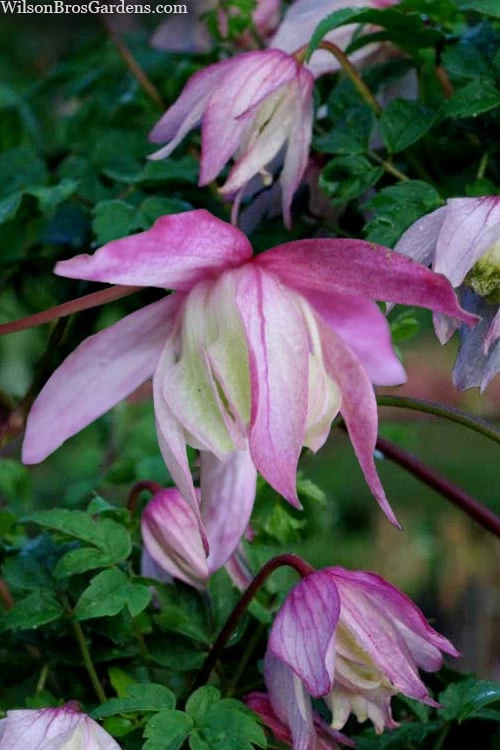
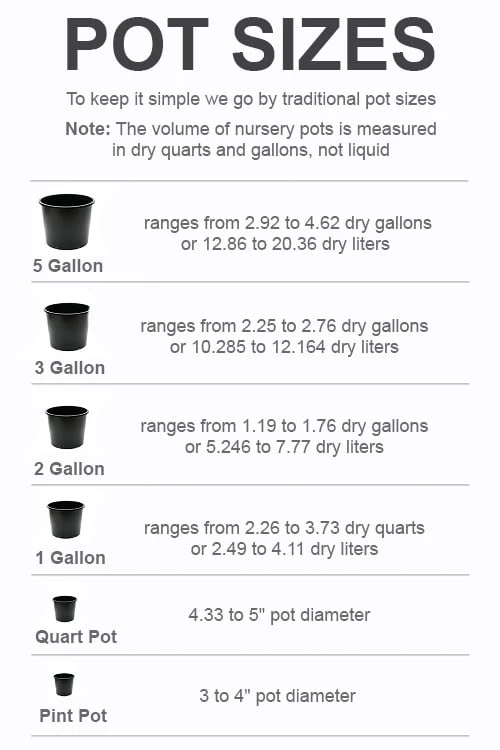



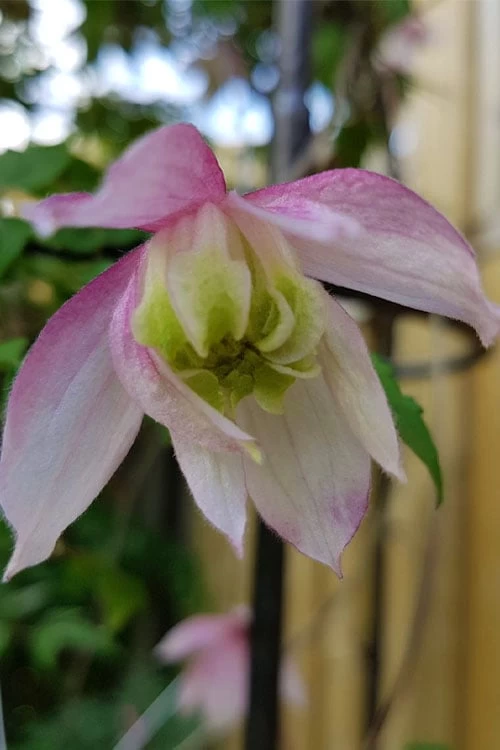
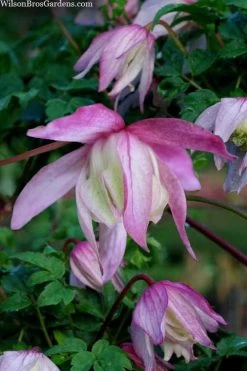
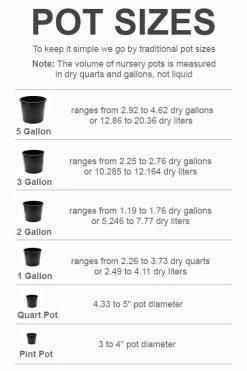



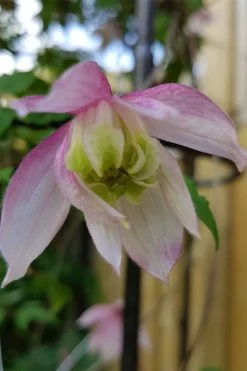
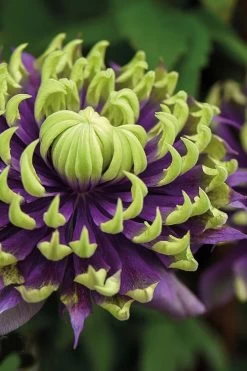

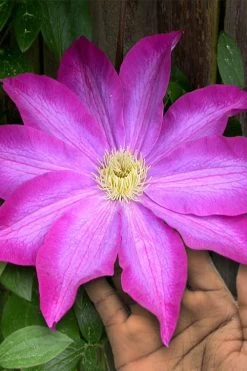





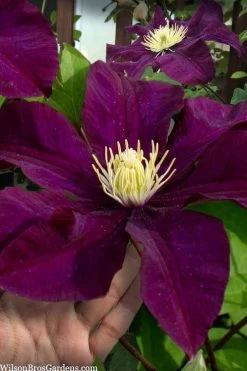
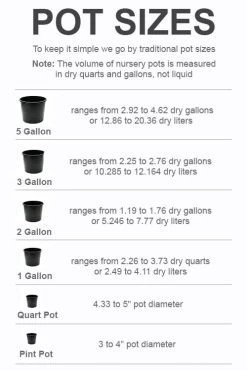

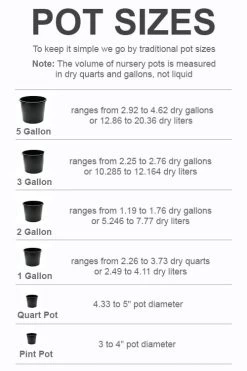


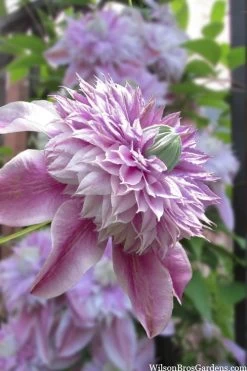

Reviews
There are no reviews yet.